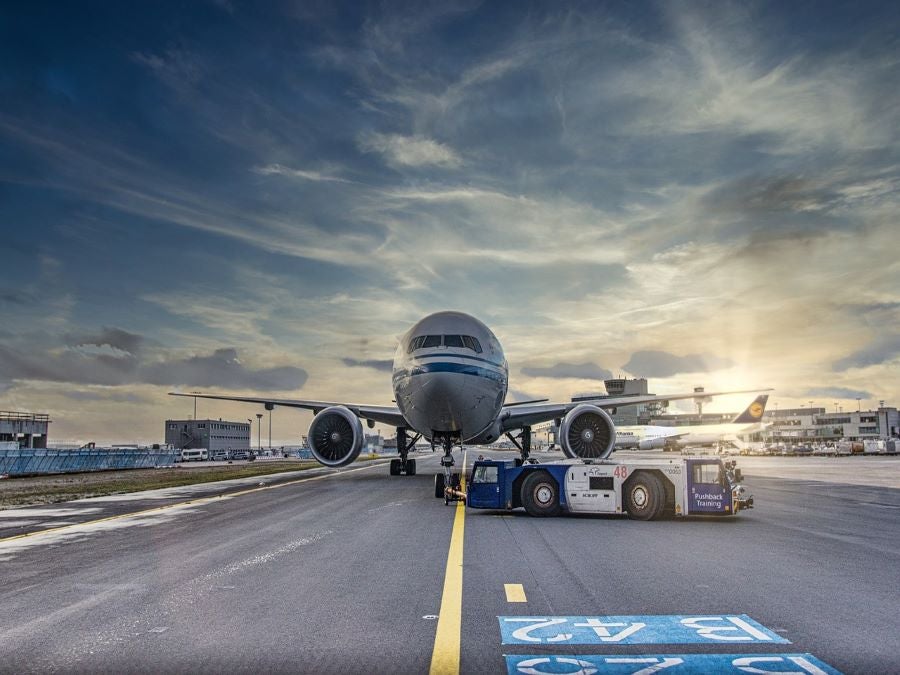
In an effort to reduce carbon emissions the aviation industry will have to consider various solutions such as system efficiency, technology advancement and sustainable aviation fuel to reach its goals, with input also required from national governments
The goal of net zero by 2050 will require the aviation industry to reduce emissions by a significant amount, which is expected to take place through the use of carbon capture technologies, among other initiatives. The aviation industry must continue to make improvements to conventional aircraft, improving performance. Harry Boneham, aerospace analyst, at GlobalData, says: “Across the industry, on average between 2005 and 2030 there has been an approximate improvement in aircraft efficiency of around 30%.”
Improvements with regards to aircraft design, fuel efficiency, engines and materials can make a significant difference to efficiency and sustainability. GlobalData’s Future of Sustainable Aviation webinar explored these issues.
In addition, system efficiencies which refers to practices such as production techniques, airport operations and maintenance and airspace management should also be examined.
It is expected that between 2021-2050, commercial aviation could generate 21.2 gigatons of CO2. For this reason, action must be taken to reduce emissions.
Boneham says: “In terms of future demand, passenger numbers are not forecast to decrease in fact they are forecast to continue increasing from 2.05 billion in 2021 to 10.04 billion in 2050.”
For this reason, aircraft efficiency and the use of sustainable aviation fuel has become significantly important. Aircraft manufacturers are aware of this and have been encouraged by government initiatives.
Energy and resource management at the production stage can make a difference as renewable energy sources can also reduce emissions. Predictive and preventative maintenance can reduce aircraft downtimes, increase environmental performance, and reduce energy consumption.
Engine technology is also an area where performance and fuel efficiency can be improved in order to consider sustainability. Battery technology is important as battery energy density prevents the rollout of all -electric flight.
The use of particular materials can also have an impact on sustainability as the weight of an aircraft can increase fuel consumption which has a negative impact on emissions. For example, composites can reduce the weight of airframes.
There are a number of features which could also increase aircraft efficiency. Canard wings (two sets of wings set at the front and rear of the airframe), blended wing (blending the body of the aircraft into its wings) which allows a high lift-to-drag ratio while truss-braced wings allow for longer, narrower wings.
Fuel consumption and the types of fuels utilised by the aviation industry are an important factor when considering how to achieve net zero.
Sustainable Aviation Fuels (SAFs) contain lower concentrations of impurities and are usually made from renewable sources such as waste oil and fats, green and municipal waste, and nonfood crops.
The main challenge regarding the use of SAF is supply issues which prevent the use of SAFs becoming widespread.
Although there has been an increase in the use of SAF, it is still used in a 50% blend with conventional aviation fuel. If there was a significant increase in the use of SAF, it could account for 65% of the emissions reduction required to reach net zero.
Elsewhere, according to an EU report, the use of hydrogen in aviation could reduce the industry’s impact by 50% to 75%. This is reflected in various government initiatives across the globe which encourage the use of hydrogen in various sectors in the transport industry.
Passengers are also aware of the impact that the aviation industry can have. Therefore, there have been many initiatives which encourage the use of alternative transport.



